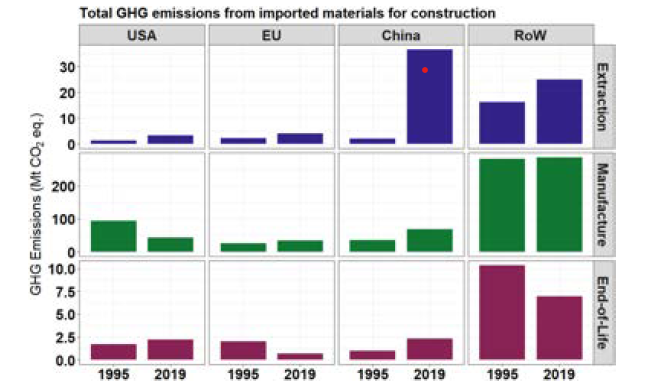Construction Materials and Greenhouse Gas Emissions
Construction materials generate nearly one-third of global carbon emissions, yet conventional accounting captures only a fraction of this impact. Using EXIOBASE data spanning 25 years, we tracked emissions across construction supply chains for cement, steel, metals, and plastics. While global construction demand nearly tripled, regional patterns diverged significantly.

The EU reduced emissions despite increased demand through renewable energy adoption and emissions trading, while China’s construction boom—driving most global growth—significantly increased domestic emissions. Manufacturing contributes most to embodied emissions compared to resource extraction and waste treatment. Increased reliance on offshore production undermines domestic emission control strategies, highlighting the need for expanded carbon border adjustment mechanisms.
Without policies addressing full supply chain emissions, even aggressive climate initiatives will be compromised by carbon leakage, creating an emissions trajectory incompatible with global climate targets.
Our historical analysis serves as a critical first step in understanding globalization patterns in construction material flows by capturing the overall shifts in material dependencies and associated emissions. By quantifying the magnitude and direction of changes across countries, we highlight how evolving import dependencies contribute to national emissions. This aggregate perspective is essential for establishing the empirical foundation upon which more detailed and forecasting exercises can be built.


